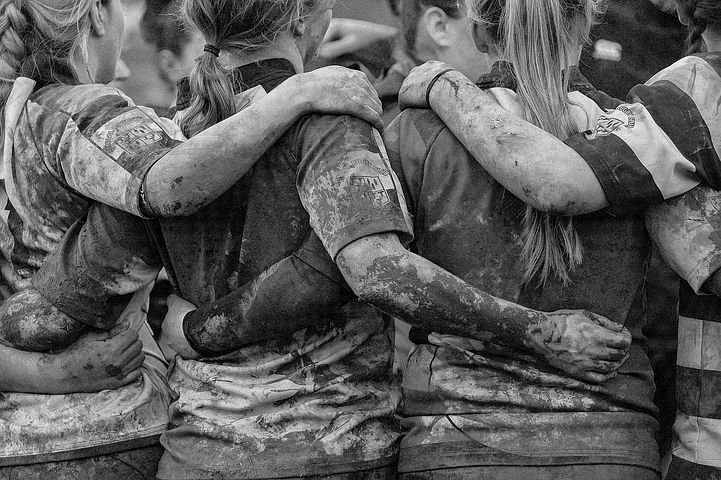A common retort to the concern that self-identification threatens women’s single sex spaces is to say that legal mechanisms would still exist to protect women from men who would abuse the system and to provide redress when those protections are breached. This argument is flawed. It fails to take into account the practical difficulties that would arise in invoking those provisions. It fails to recognise how social policing would be diminished and women would be compelled to lower their boundaries.
What is social policing? Any woman will recognise the steps that we take to keep ourselves safe in public spaces: telling a friend when we are making a journey alone, pretending to be on the phone when in a train carriage with a strange man, crossing the street if a man is walking behind us are but a few of the behaviours that many women practise as a matter of reflex. Included in these behaviours are measures related to communal areas: if we see a male-bodied person in the women’s changing rooms at the gym we will challenge him and ask him to leave, we will tell a member of staff, we will warn other women entering the room, we will postpone undressing until he flees in embarrassment at his mistake or is removed by the gym staff. The chances are that it is an innocent mistake and that man poses no threat to our safety, but just like crossing the road when a man is walking behind us, we would rather not take the chance.
Self-identification forces us to lower our boundaries around all male people, whether genuine transwomen or men who would pretend to be one. It asks us to mentally place that man in the category of “woman: unlikely to be a threat” rather than “man: a potential risk”, on nothing more than his word that he is the former. This is not about whether transwomen are a threat to other women; it’s about the fact that the removal of objective criteria for what it means to be a transwoman makes it impossible in that scenario to draw that distinction. If the response to “This is the ladies, please can you leave” is “I’m a woman”, then challenge to that assertion becomes difficult. Even the gym staff will probably have been coached that it would be discriminatory to ask a transwoman to provide a copy of their GRC, so best not ask the question. It might be a lie, but who wants to be seen as a bigot for falsely challenging and humiliating a genuine transwoman? We saw this exact scenario play out in the Wi Spa incident. Better not to challenge, not to tell the staff, not to warn other women and to think twice about returning to that gym.
What legal redress could individuals or businesses invoke to protect single-sex spaces? Let us look at an example of a gym changing room.
In criminal law, section 66 of the Sexual Offences Act 2003 creates an offence of ‘Exposure’ where a person (a) intentionally exposes his genitals, and (b) intends that someone will see them and be caused alarm or distress. If a man is encountered in the female changing rooms exposing his genitals, a prosecution would be reasonably straightforward: the lack of legitimate purpose in being in a state of undress in that place creates a presumption that he would know that a woman would be likely to be caused alarm or distress by seeing male genitals. Challenging a defence that he was acting with benign intent would not be difficult. Little would be required from a prosecution witness other than to testify that they saw male genitals and that the man concerned did not immediately act to remedy his mistake.
However, if that same person states that he is a woman and has a legitimate purpose in using the changing rooms to get changed, then a prosecution becomes more difficult. The presumption of mal-intent falls away. That is not to say that a prosecution is impossible: as in the WiSpa incident, if the intruder is in a state of arousal then it would be hard to argue lack of intent. But it is likely that the prosecution witness would face much more rigorous questioning by the defence: What did you see? How long for? Are you sure (s)he was aroused? Aren’t you just a bigot for being alarmed at sharing a changing room with this poor transwoman who just wanted to get changed?
A two-tier system for offenders is effectively created: a presumption of mal-intent if the man identifies as such, and no presumption if he identifies as transgender; but in either case the women he encounters will have observed exactly the same male body. It is well known that ‘minor’ sexual offending such as flashing is frequently a precursor to more serious crimes. Self-ID creates a situation where men can commit those offences with impunity.
Civil law, and specifically the exceptions contained in part 27 of Schedule 3 of the Equality Act 2010 permit organisations such as gyms to provide single-sex facilities. They are also likely to have a contractual term for the use of their gym that members are not to harass, alarm or intimidate other users, and in theory any member beaching this condition by using changing facilities designated for the opposite sex could be banned from the gym and refused re-entry without the gym unlawfully discriminating against him.
However, as our earlier blog explains, anything other than a blanket enforcement of the single-sex space is likely to be unworkable in practice. Not only does this create a minefield for the gym workers to navigate, but it makes it difficult for the female patrons to object as well. It becomes impossible for a female patron to act on those feelings of unease that have caused many a woman to take precautionary measures: instead action can only be taken once the unwelcome conduct has taken place.
There is no obvious civil law route for a woman to take direct action against a man for using female spaces or services. Her best course of action would be to bring a claim for direct or indirect discrimination against the service provider in relation to her protected characteristic of sex and/or where applicable, her religious belief. She could argue that the failure to provide appropriate single-sex facilities to change subjects her to a detriment upon which a claim for indirect discrimination can be founded. If (as seems to be an emerging trend) the serviced provide designates the facilities as ‘male’ and ‘gender neutral’, she may have a claim for direct discrimination.
But resorting to the law is expensive, time-consuming and can be emotionally challenging. Some women will simply limit their engagement with sports, with recreation and with spending time outside of the home.



